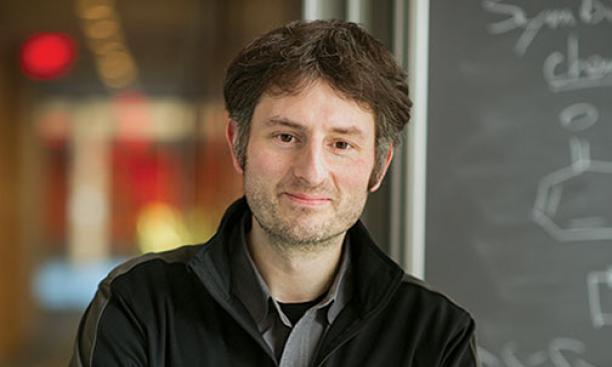

There is a war going on inside us every moment, with microscopic bacteria — some good, some bad — battling each other for supremacy. Our arsenal is a legion of antibiotics, developed over the past 80 years, that helps us kill the harmful pathogens. In fact, many of these antibiotics have been developed from chemicals produced by bacteria to fight their own battles. “They have the ability to produce antibiotics, presumably because they grow and evolve in an environment where they are competing with other bacteria,” says chemistry professor Mohammad “Mo” Seyedsayamdost, who is working to add new weapons to our antibiotic stockpile.
Many antibiotics we use today are based on the chemical structures, or “scaffolds,” of those discovered in the 1940s and 1950s, the so-called golden age of antibiotic medicine. As pathogens have mutated to develop resistance, however, these antibiotics have become less effective. “We are in the middle of an antibiotic crisis,” Seyedsayamdost says. “At the same time, most pharmaceutical companies have abandoned their search for new antibiotics. Other drugs have larger profit margins, and so they focus on those instead.”
Seyedsayamdost’s lab has taken a new approach: letting bacteria do the work for us. A single type of bacterium may produce one or two antibiotics, but they have the capability of producing dozens more, if only the right clusters of genes could be “switched on” inside them. With a background in both bioengineering and chemistry, Seyedsayamdost has been working to activate these so-called “silent” or “cryptic” genes.
Seyedsayamdost began his work with bacteria called Burkholderia thailandensis, which secretes a molecule called malleilactone, but only when the pathogen is inside a parasitic worm. Seyedsayamdost wanted to see if he could “switch on” the gene cluster that produces malleilactone in the laboratory by exposing the bacteria to naturally occurring chemicals.
Setting up a grid of more than 600 squares, he inserted a bacterial culture into each one, modified with a gene that would make it luminesce when the malleilactone is activated. Then he exposed each culture to a different chemical. “I was prepared to screen tens of thousands of molecules to find the right one,” Seyedsayamdost says. Instead, in the very first trial, nine squares lit up, showing the presence of malleilactone.
In all cases, surprisingly, the successful chemicals were themselves other antibiotics, which may act as messages to activate these silent genes. “We use them in high concentrations to kill bacteria, but at the concentrations they are found in nature, they may be signaling molecules,” speculates Seyedsayamdost. The next step is to introduce this method to other silent gene clusters, in the hope of producing new antibiotics. At the same time, the technique could be used to set up bacterial “factories” that could rapidly produce antibiotics, cutting down production costs, he says: “This could lead us to a molecule that could be used as a new scaffold for future antibiotics.”
